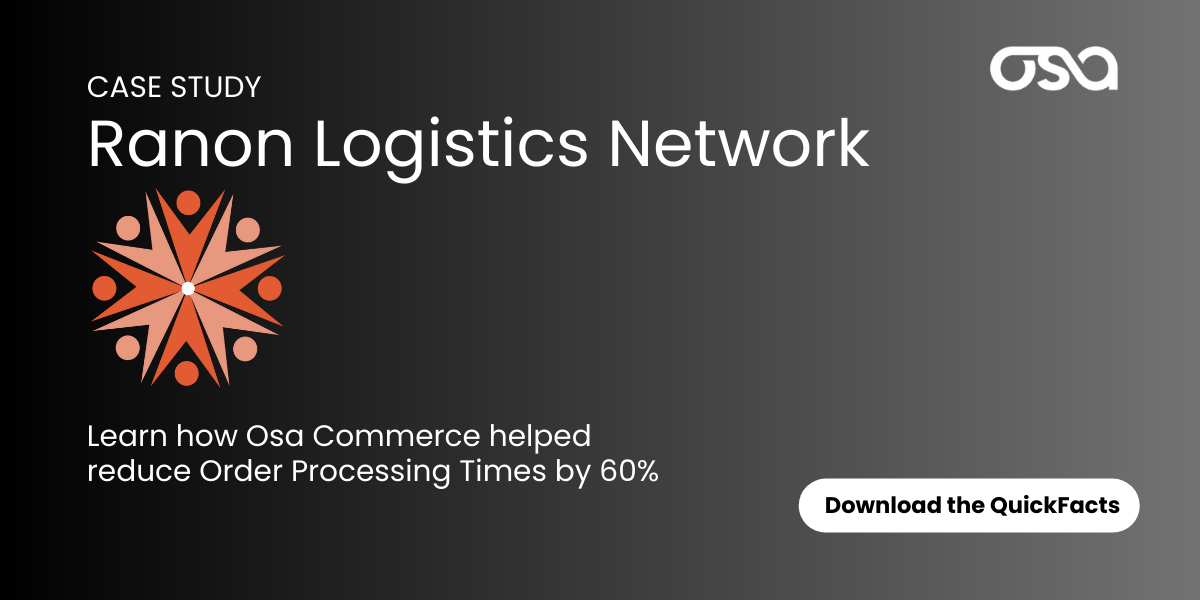3 min read
6 Ways Retailers Can Make Their Packaging More Sustainable
 Flora Collins
:
September 6, 2023
Flora Collins
:
September 6, 2023
%20(1024%20%C3%97%20512%20px).png)
In today's supply chain landscape, sustainability isn't just a buzzword; it's a critical responsibility that businesses are embracing across every facet of their operations. One area where the push for sustainability is gaining significant traction is packaging; in fact, 81% of consumers are now demanding eco-friendly wrapping. And while traditional approaches to sustainable packaging have focused on material choices and design, there's a new player on the scene that's driving meaningful change: supply chain technology. The convergence of sustainability goals and technological advancements is reshaping the way businesses approach their packaging strategies. Here's how your packaging can become more sustainable with the strategic integration of collaborative visibility technology.
81% of consumers are demanding eco-friendly wrapping
1. Smart Demand Forecasting and Inventory Management
Supply chain technology empowers businesses to predict consumer demand with remarkable accuracy. By leveraging advanced data analytics and predictive algorithms, you can optimize inventory levels and prevent overproduction. This translates to reduced material waste and the efficient utilization of resources. As you fine-tune your production to meet actual demand, packaging materials are used purposefully, curbing unnecessary waste and environmental impact.
2. Efficient Route Optimization and Transportation
Minimizing the carbon footprint of your packaging extends beyond the product itself. Supply chain technology enables optimized route planning and transportation, which not only saves time and money but also reduces emissions. With real-time data and analytics, you can choose the most eco-friendly shipping options, consolidate shipments, and avoid unnecessary trips. This translates to less fuel consumption and fewer greenhouse gas emissions, contributing to a greener supply chain.
3. On-Demand Customization
Thanks to supply chain technology, customization doesn't have to come at the expense of sustainability. The integration of digital platforms allows for on-demand customization of packaging materials, minimizing waste generated from producing excess or obsolete inventory. This software not only reduces material waste, but also streamlines the packaging process, promoting efficiency. Businesses can also customize packaging sizes to fit the product snugly, preventing unnecessary material waste, optimizing shipping space, and reducing fuel consumption and emissions during transportation. Efficient packaging not only benefits the environment but also positively impacts your bottom line.
Moreover, minimalism is key. Embrace the minimalist design philosophy to curtail excess material usage. Simplify graphics, reduce layers, and eliminate unnecessary embellishments.

How Unified Commerce Actually Improves Inventory Turns

Scaling A 3PL Shouldn’t Require More People — It Requires Better Orchestration

E-commerce Complexity Is Killing Brands
4. Real-time Visibility and Collaboration
A sustainable packaging strategy requires collaboration across the entire supply chain. Invest in supply chain technology that offers real-time transparency into each stage of the process, from sourcing materials to final delivery. This transparency fosters collaborative visibility among suppliers, manufacturers, and distributors, enabling smoother operations and a reduced risk of disruptions. A well-coordinated supply chain minimizes the need for rush orders and last-minute packaging changes, preventing unnecessary waste.
Forge partnerships with suppliers who share your commitment to sustainability. Collaborate with organizations that specialize in sustainable materials or offer recycling programs. By working together, you can collectively drive positive change across the industry.
5. Digital Documentation and Compliance
Supply chain technology built on blockchain facilitates digital documentation and compliance management. This reduces the need for excessive paperwork and physical documentation, streamlining processes and reducing the use of paper. Accurate digital records ensure compliance with sustainability standards and regulations, keeping your packaging practices aligned with industry guidelines.
Moreover, sustainable packaging is intrinsically linked to responsible sourcing practices. Supply chain technology provides tools to trace raw materials back to their source, ensuring they meet ethical and sustainability standards. This transparency not only supports eco-friendly initiatives, but also enhances your brand's reputation as a conscientious player in the market.
6. Materials and Multi-functionality
The foundation of sustainable packaging lies in the materials chosen. Opt for eco-friendly alternatives like recycled cardboard, biodegradable plastics, or even materials made from agricultural waste. Sustainable packaging also extends to the inks and printing techniques employed. Opt for water-based, soy-based, or vegetable-based inks that are less harmful to the environment. Consider innovative printing methods like digital printing that use fewer resources and generate minimal waste.
These options reduce the strain on natural resources and minimize the carbon footprint associated with traditional packaging materials.
Another way to elevate your packaging's sustainability quotient is by making it reusable or multi-functional. Design packaging that can be repurposed for storage, organization, or creative DIY projects. Not only does this enhance the packaging's value, but it also promotes a culture of resourcefulness among your customers. Explore the realm of biodegradable and compostable packaging materials. From plant-based plastics to packaging that decomposes naturally without leaving harmful residues, these options align with nature's cycle and significantly reduce waste accumulation.
The marriage of sustainability and supply chain technology offers a transformative path for making your packaging more sustainable. By harnessing the power of data analytics and collaborative visibility, you can optimize processes, reduce waste, and enhance your brand's eco-friendly image. Embracing these technological advancements doesn't just align with responsible business practices; it's a strategic decision that positions your company as a leader in sustainability within your industry. As the world evolves, so should your packaging strategy – with technology as your sustainability ally.



